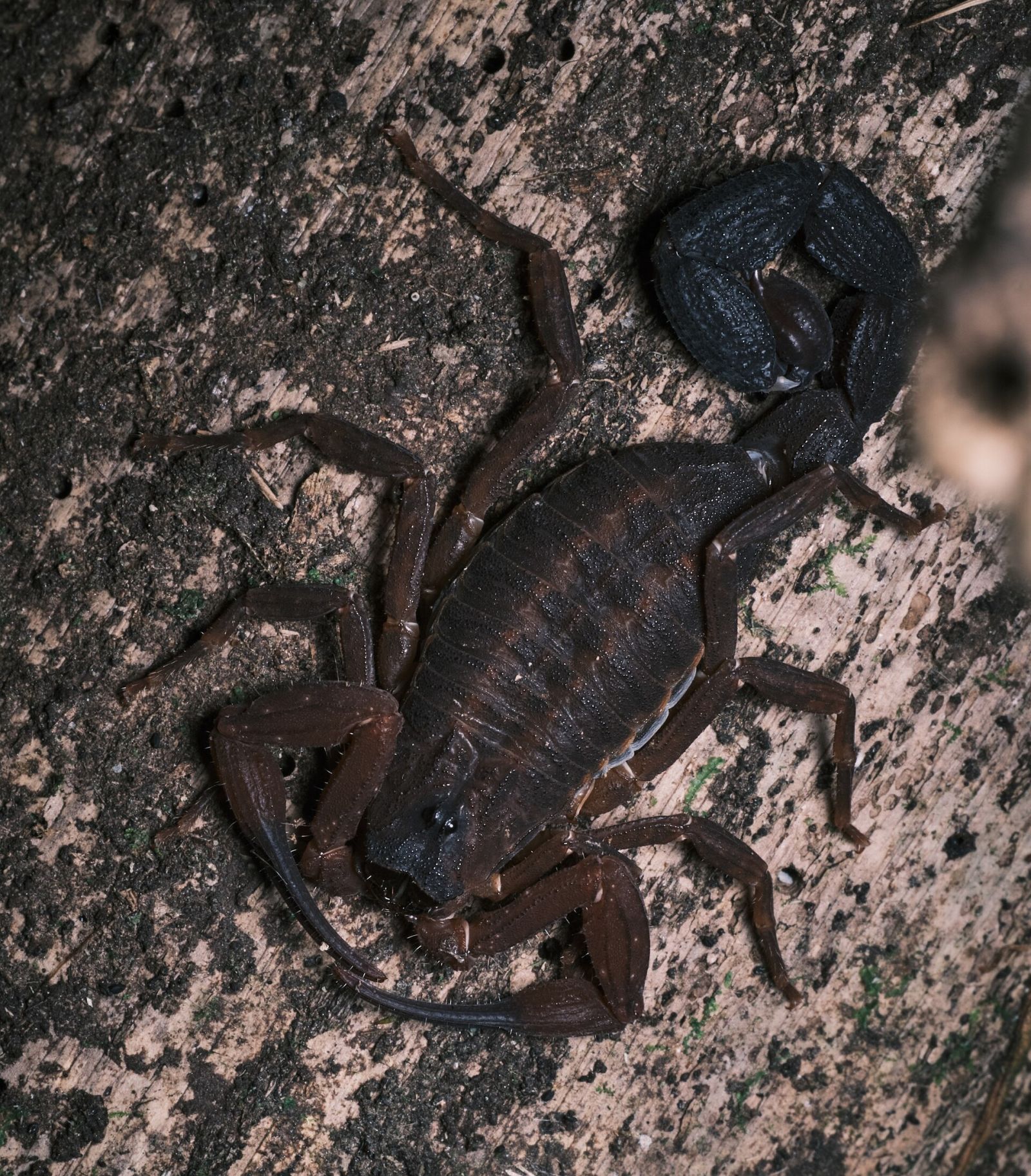Discovery of a scorpion species that sprays its venom at a distance 🦂
Published by Cédric,
Article author: Cédric DEPOND
Source: Zoological Journal of the Linnean Society
Other Languages: FR, DE, ES, PT
Article author: Cédric DEPOND
Source: Zoological Journal of the Linnean Society
Other Languages: FR, DE, ES, PT
Follow us on Google News (click on ☆)
This discovery marks a major breakthrough in the study of arachnids. The Tityus achilles thus joins a very select group of scorpions known for this ability, previously observed only in Androctonus and Centruroides species, found in Africa and North and Central America, respectively.
A rare and complex defense technique
The Tityus achilles uses two distinct methods to project its venom. The first involves single droplets, while the second involves bursts that can reach up to 14 inches (36 cm). These projections, although less precise than a direct injection, allow the scorpion to deter predators without physical contact.
Observations made with high-speed cameras show that the venom becomes more concentrated after several sprays. This adaptation suggests an optimization of defense, despite the high energy cost of this strategy.
A multifaceted venom
The venom of this scorpion is composed of two types: a transparent "pre-venom" and a denser, opaque venom. The first, less costly to produce, is often used as a first line of defense. The second, more potent, is reserved for critical situations.
This duality reflects a fine evolutionary adaptation, allowing the scorpion to manage its resources while maintaining an effective defense. Researchers believe this strategy is particularly useful against vertebrate predators, whose eyes and mucous membranes are sensitive to toxins.
A discovery with scientific implications
The discovery of Tityus achilles opens new perspectives on the evolution of defense mechanisms in scorpions. Researchers hope that studying its venom and spraying techniques will shed light on the similarities and differences with other species capable of this behavior.
Moreover, this find underscores the importance of preserving Colombian ecosystems, where many species remain to be discovered. The rainforests of the Magdalena Valley, habitat of this scorpion, are home to exceptional and fragile biodiversity.
